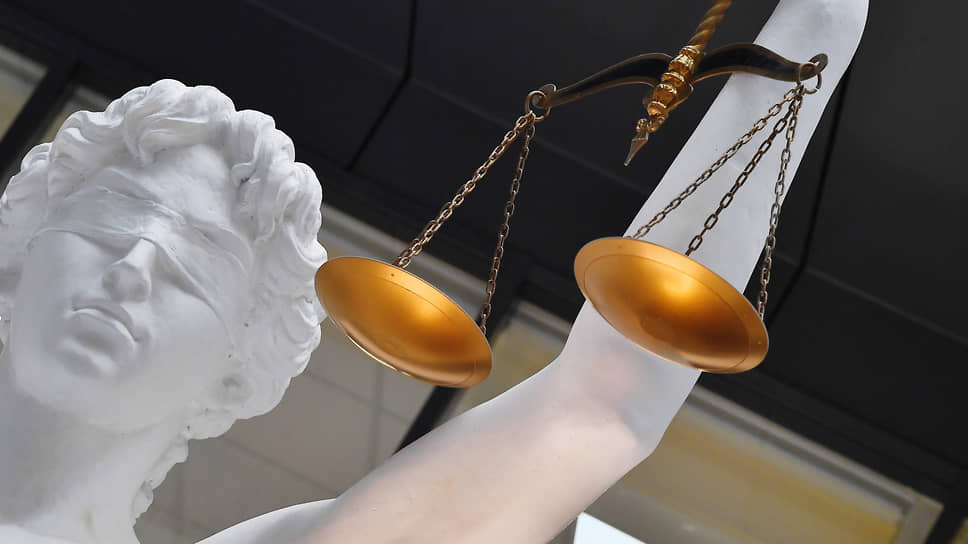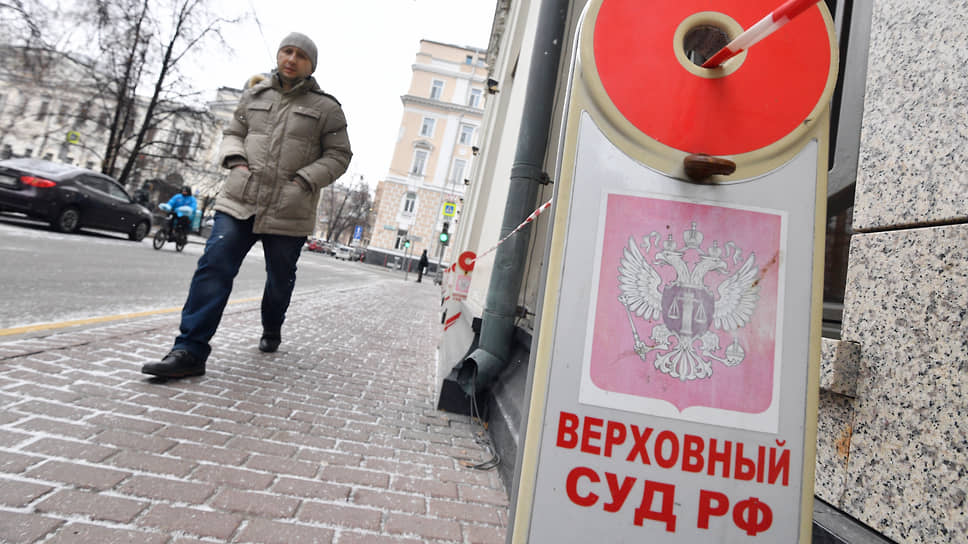its use raises more and more questions
[ad_1]
The application of a total bankruptcy moratorium in 2022 raises more and more questions in practice. Almost all persons who had unfulfilled obligations decided to take advantage of the rule on exemption from payment of penalties for debts existing at the time of the moratorium. But not all of them had this right. The Supreme Court of the Russian Federation (SC) recognized that the protective measure does not apply to those against whom bankruptcy proceedings have already been initiated. The Supreme Court added that those who had “signs of insolvency with no chance of restoring” normal activities are not subject to the moratorium, and “collecting a penalty from them does not threaten the stability of civil circulation and public order.” In general, lawyers agree with the approach of the Supreme Court, but see the risks of an overly broad interpretation of its conclusions, which may prevent the actually affected debtors from taking advantage of the moratorium.
No chance of recovery
In February, the Supreme Court considered the dispute, the main question of which, in essence, boils down to how hopeless the financial situation of the debtor must be in order to refuse to apply a bankruptcy moratorium to it.
The 2022 moratorium was total and applied to all citizens, individual entrepreneurs and legal entities (except for developers with problematic properties and persons included in the government’s special list). This was its significant difference from the 2020 moratorium, which was introduced in connection with the coronavirus pandemic and applied only to the industries most affected by it. Anti-Russian sanctions were cited as the reasons for the 2022 moratorium, and to protect businesses from their consequences, the Russian government adopted this measure, which was in effect from April to October 2022. In addition to prohibiting creditors from bankrupting their debtors, the moratorium prohibited, during its duration, the accrual of penalties (penalties, interest) on debts that had arisen before.
The 2022 moratorium, according to lawyers, was taken advantage of by almost everyone who had at least some outstanding obligations at that time. But not all lenders are with this reconciledwhich resulted in many lawsuits.
Thus, the Volgograd department of the Federal Property Management Agency filed a claim against the Volgograd Metallurgical Plant “Red October” JSC, demanding 1.5 million rubles. debt for renting a land plot, as well as penalties accrued on this amount. Arbitration courts collected the debt and part of the penalty, refusing to charge 100 thousand rubles. penalties for the period from April 11 to July 10, 2022. The courts indicated that at that time a bankruptcy moratorium was in effect, which, among other things, exempted from the accrual of penalties on debts that had arisen before this measure.
The agency appealed the refusal of the penalty to the Supreme Court, arguing that since the defendant had already been declared bankrupt, the moratorium did not apply to him. The case was transferred to the economic board, which ultimately supported the arguments of the Federal Property Management Agency.
The Supreme Court explained that the moratorium is being introduced by the government “to ensure economic stability in exceptional cases (natural and man-made emergencies, significant changes in the ruble exchange rate and similar circumstances).” In the decision, the panel referred to the resolution of the plenum of the Supreme Court No. 44 of December 24, 2020, adopted during the first pandemic moratorium, which stated that it does not apply to persons against whom bankruptcy proceedings were initiated by the time this protective measure was introduced. Bankruptcy proceedings were opened against the plant in March 2018, and eight months later it was declared bankrupt.
The fact is that the moratorium is aimed “at preserving the possibility of further carrying out the activities of a person who finds himself in a crisis situation caused by specific extraordinary unexpected economic circumstances, and his recovery from this crisis,” the board emphasized. But if, on the date of introduction of the moratorium, persons “already have signs of insolvency (insufficient property)” and their “activities, as a general rule, cannot be restored,” the Supreme Court noted, “such a measure of state support does not apply to them, and the collection of penalties from them is not threatens the stability of civil circulation and public order.”
In addition, the panel pointed out, the ban on the accrual of penalties (fines, penalties) applies only to obligations not related to current payments.
The latter are those that arose after the initiation of bankruptcy proceedings against the debtor; these include the rental debt to the Federal Property Management Agency. Thus, there is no prohibition to charge penalties to the plant during the moratorium period. The Supreme Court sent the dispute for a new trial, instructing the court to “take into account the above.”
In the spirit of the insolvency institution
Roman Parkhomenko, partner of the Pen & Paper Bar Association, supports the position of the Supreme Court on the non-application of the moratorium to persons against whom bankruptcy proceedings were initiated at the time of its introduction. “A moratorium is an extraordinary measure that is not aimed at releasing debtors from debts, but, in fact, at preventing a wave of bankruptcies,” explains Mr. Parkhomenko. “And if the debtor has not fulfilled the obligation and there are grounds for initiating bankruptcy proceedings against him even before the introduction of the moratorium, there is no reason to give him preferences.”
Managing partner of Yurtechconsult Alexey Nikolaev even considers the introduction of a “total moratorium for all debtors” in 2022 to be erroneous: “This measure should only help the victims.”
In his opinion, “the legislator should have introduced a rebuttable presumption of the onset of signs of bankruptcy due to the reasons for which the moratorium was introduced” – then creditors could refer to the fact that the reasons for the defendant’s financial problems “are not related to the reasons for introducing the moratorium, which would allow them charge a penalty or bankrupt such debtors.”
Mr. Nikolaev reminds that the Supreme Court allows the non-application of a protective measure if the creditor proves that “the debtor did not actually suffer from the circumstances that served as the basis for the introduction of the moratorium.” There is already practice in such disputes: in them, creditors usually “refer to the financial statements, indicating that the company’s revenue and profit did not decrease during the moratorium period,” says the lawyer.
At the same time, Roman Parkhomenko admits that “one cannot exclude a situation in which a bankruptcy case may be initiated at the initiative of a creditor against a generally solvent person” and subsequently the debt is repaid and the case is terminated “without introducing any bankruptcy procedure.” “Obviously, in such a situation, the debtor finds himself in an unequal position with other participants in the turnover, since he had the opportunity to be released from the penalty, but lost it,” clarifies Mr. Parkhomenko.
Moreover, “it is no secret that bankruptcy procedures in Russia have an unreasonable bias towards the liquidation of problem enterprises,” states Oleg Moskvitin, a partner at the Muranov, Chernyakov and Partners bar association: “Only a small part of them are actually trying to save, bring out of bankruptcy, restore normal activity.” In his opinion, this approach “contradicts both the interests of the national economy and the spirit of the insolvency institution, which should set the main goal of saving businesses and, accordingly, preserving jobs, the tax base, and the social sphere around such enterprises.”
Accordingly, Mr. Moskvitin summarizes, “after opening an insolvency case, it is too early to put an end to the debtor enterprise; on the contrary, it is necessary to support it, and a moratorium may be one of such measures.”
In addition, a situation is also possible when there was in fact no debt or it was repaid before the creditor went to court, argues Roman Parkhomenko. “What to do if a bankruptcy case was initiated as a result of dishonest actions of creditors? In such a situation, it would be possible to think about a more flexible approach and broadly interpret the current rules, allowing such a debtor to still count on exemption from paying penalties during the moratorium period,” believes Mr. Parkhomenko.
The law is missing letters
In general, lawyers see the risks of a broad interpretation of the Supreme Court’s conclusion on the non-application of the moratorium to insolvent persons whose activities cannot be restored, and the collection of penalties from them does not threaten the stability of turnover and the economy. Oleg Moskvitin believes that this “requires additional scientific and practical discussion.” Moreover, the initiation of a bankruptcy case does not mean that “as a general rule, the activities of such enterprises cannot be restored” – this is “at least not entirely accurate even by the letter of the law,” Mr. Moskvitin emphasizes.
The category “does not threaten the stability of civil circulation and public order” is also very evaluative, according to Oleg Moskvitin.
“It is very difficult for local courts and litigants to determine when such a threat exists and when it does not. If we are talking about saving only large enterprises through a moratorium as a guarantee that civil turnover will suffer the least in this case, then it seems that such an approach would contradict the principles of equality of different enterprises before the law in the same situation,” points out Mr. Moskvitin.
Lawyers believe that the issues of the circle of persons to whom the 2022 moratorium applied require further discussion and clarification. Including, Oleg Moskvitin clarifies, taking into account the difference between the sanctions moratorium and the approaches that the Supreme Court formed during the 2020 pandemic moratorium.
[ad_2]
Source link







